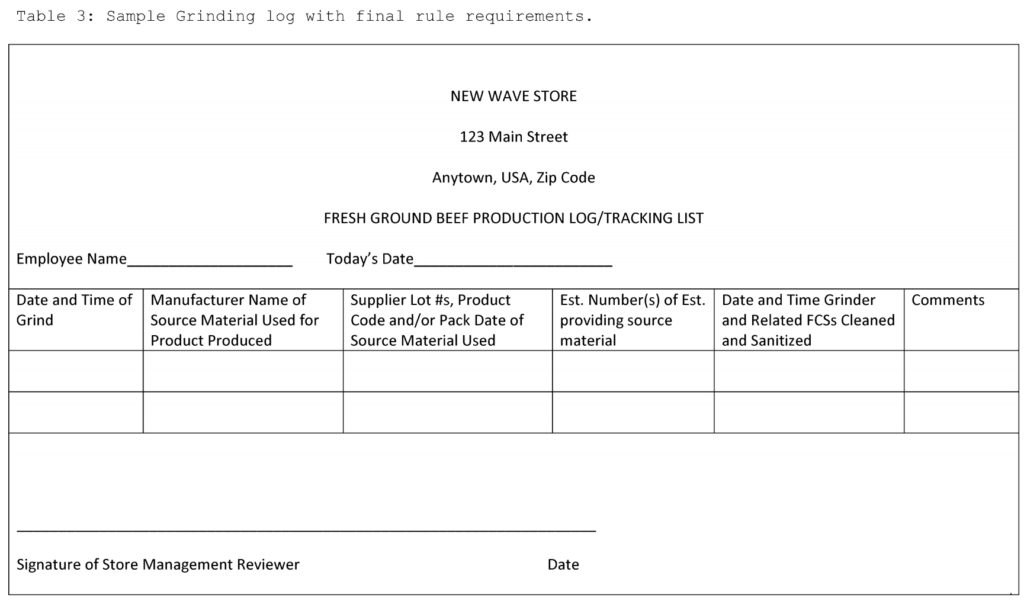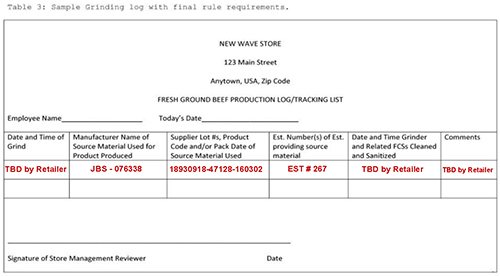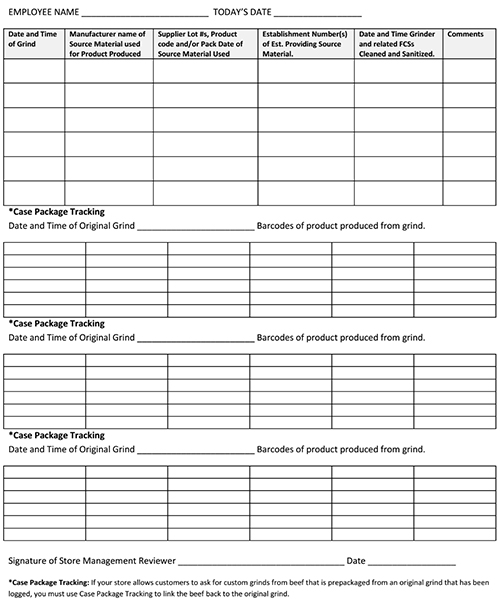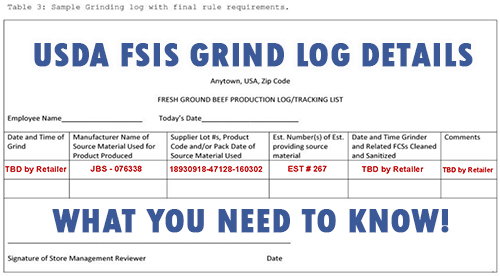Grind Log
The USDA Food Safety and Inspection Service posted their final rules and regulations on Monday, December 14, 2015. They made many changes to the requirements of grocery stores record keeping for their beef grind log enforcement.
SPECIAL NO CONTRACT PRICING: Sign up now and get Grind Log Pro for only $10 a week!
You can start using Grind Log Pro today!
Originally on July 22, 2014 there were more requirements as show in the screenshot below:

They used to require these extra details:
- Exact Name and Type of Product Produced
- Package size of Product Produced
- Amount in pounds of Source Material Used in each lot including carryover.
- Names, Points of Contact, Phone numbers of each official establishment.
- The records be stored for 3 years.
The new ruling only requires the following as show in the screenshot below:

Not only are there fewer requirements, the grocery stores only have to store grind log records for 1 year. The enforcement went into effect on October 1, 2016. This is good news for grocery stores. The amount of time it would have taken to perform the grind log in the previous requirements would have been very costly to the store in time and money. Even though the time has been reduced by requiring less information, there is still a hurdle stores must overcome. Each beef case uses a barcode called GS1 128. It has upwards of 44 digits that must be decoded and must be recorded. Each 128 barcode has specific information that is used to fill out the form.
If you have questions on any of this information or would like to get details on an electronic grind log please contact us. We are always happy to help.
Electronic Grind Log Apps
How to fill out the Manual Grind Log Forms:
(Decipher the 44 digit barcode as shown below, and write the results on a form)
The bad news: This information is pulled from a 44 digit barcode on the case. To break down this 44 digit barcode and write it on a form every time you perform a grind is a tedious time consuming task. If your store adds trim from lugs or if you allow case pulls the form doubles in size to track that info (see below).
See the official final record keeping requirements:
Rules and Regulations – USDA Food Safety and Inspection Service
Here is what is needed:
- The date and time of the grind.
- Manufacturer Name of Source Material Used for Product Produced.
- Supplier Lot Numbers / Product Code and/or Pack Date of Source Material Used.
- The Establishment Number providing source material.
- Date and Time of Grinder and Related FCSs Cleaned and Sanitized.
How to read a GS1 128 Barcode:

How to fill out the FSIS USDA Manual Form:

If you add trim or allow case pulls your form will look like this:

DETAILS ON THE FSIS’ FINDINGS ON MANUAL LOGS:
The FSIS used a Center for Disease Control and Prevention (CDC) study of ground beef record keeping practices to show how few manual logs are compliant. The study found that 74 percent of chain retail stores and 12 percent of independent retail stores kept grinding logs. Of the stores that kept grinding logs, the study reported 78 percent of those logs were incomplete. The record keeping distribution of large entities based on the survey results is approximately 16 percent complete, 58 percent incomplete, and 26 percent no records. For small entities, the distribution is approximately 3 percent complete, 9 percent incomplete , and 88 percent no records.
If you have questions on any of this information or would like to get details on an electronic grind log please contact us. We are always happy to help.





